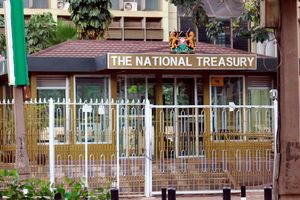
The Intergovernmental Relations Technical Committee Chief Executive Officer Kipkirui Chepkwony.
The government is set to restructure, merge, or dissolve more state agencies that have duplicating functions with devolved units, barely three months after the Cabinet resolved to consolidate 42 agencies.
The Intergovernmental Relations Technical Committee (IGRTC) has identified additional agencies whose mandates overlap with or interfere with county functions, putting them on the chopping block.
IGRTC Chief Executive Officer Kipkirui Chepkwony said the move is intended to accelerate the full transfer of devolved functions to county governments.
However, beyond issuing a gazette notice to effect the changes, the most significant hurdle will be ensuring counties have the necessary resources to execute these functions effectively.
“The greatest challenge that is going to be in front of us is to transfer the resources, to build the capacity of county governments,” said IGRTC chairperson Kithinji Kiragu, explaining that this extends beyond financial allocations to include human resources and facilities that will “enable the county governments to perform these functions better.”
“But what is more important is for all levels of governments to work together…to rationalise the budgets,” Mr Kiragu added.
Mr Kiragu said the committee will conclude the exercise by March 2025 to ensure the funds are disbursed in the financial year 25/26 to facilitate smooth operations in the devolved units as they take over the new roles.
The IGRTC Chairperson also revealed that the committee has also identified key pieces of legislation that they will be requesting Parliament to repeal or amend to ensure the transfer of all devolved functions to the counties.
“And so we have between now and July 1, 2025, as it was resolved… to be able to sensitise and have everybody have a common understanding on the new elements [and] the impact of the transfer [of roles],” said Chepkwony during a sensitisation forum in Naivasha.
Speaking to stakeholders from both the national and county governments, Chepkwony reiterated that the ultimate goal is not only to transfer functions but also to ensure that counties receive adequate funding to support these roles.
In January, the Cabinet approved a major restructuring of state corporations, ordering the merger of 42 entities into 20 to eliminate redundancies. The decision, according to a Cabinet dispatch, was aligned with the government’s broader strategy to streamline operations, cut excesses, and curb wastage.
“The reforms will address operational and financial inefficiencies, enhance service delivery, and reduce reliance on the Exchequer,” the dispatch explained. “The National Treasury assessed 271 State Corporations, excluding those earmarked for privatisation.”
Additionally, nine state corporations, the cabinet dispatch had said, will be dissolved, with their functions transferred to relevant ministries or other state entities, while 16 corporations with outdated functions that can be provided by the private sector will be divested or dissolved.
The government has assured Kenyans that no jobs will be lost following the Cabinet’s decision to merge 42 state corporations into 20 entities as part of a fiscal consolidation plan.
With the restructuring process already underway, attention now shifts to how effectively the government will implement these changes while ensuring counties are well-equipped to take up their new responsibilities.






